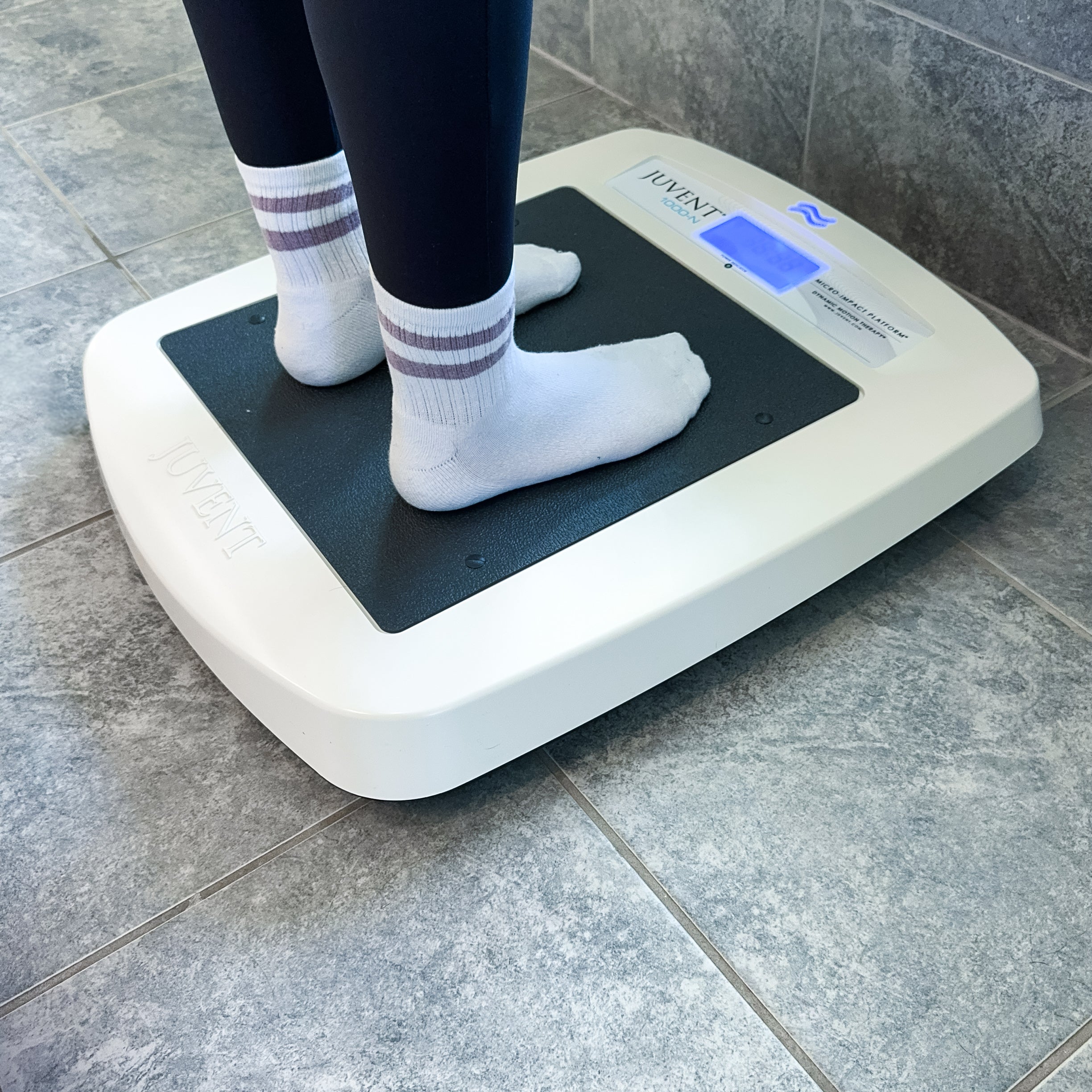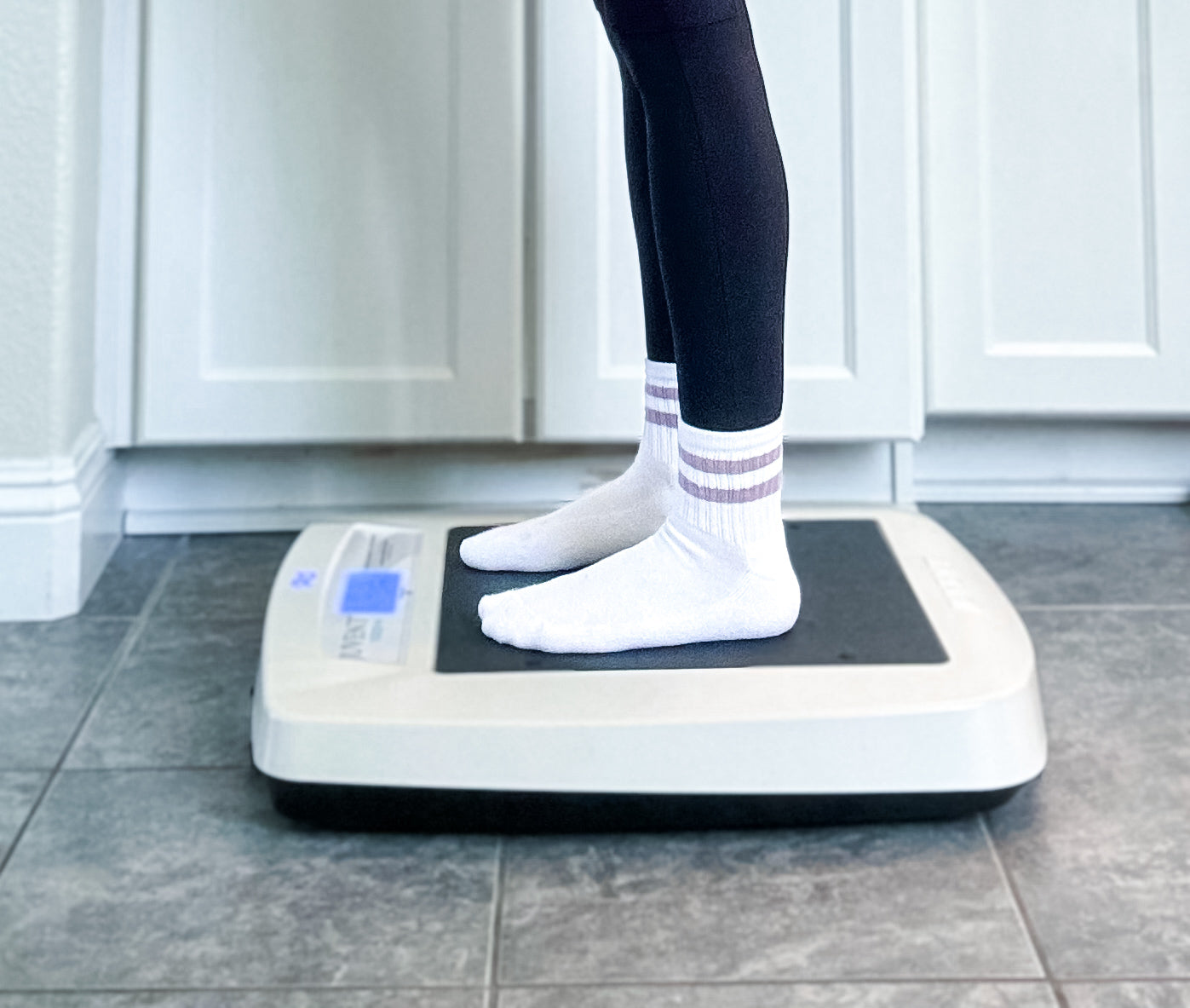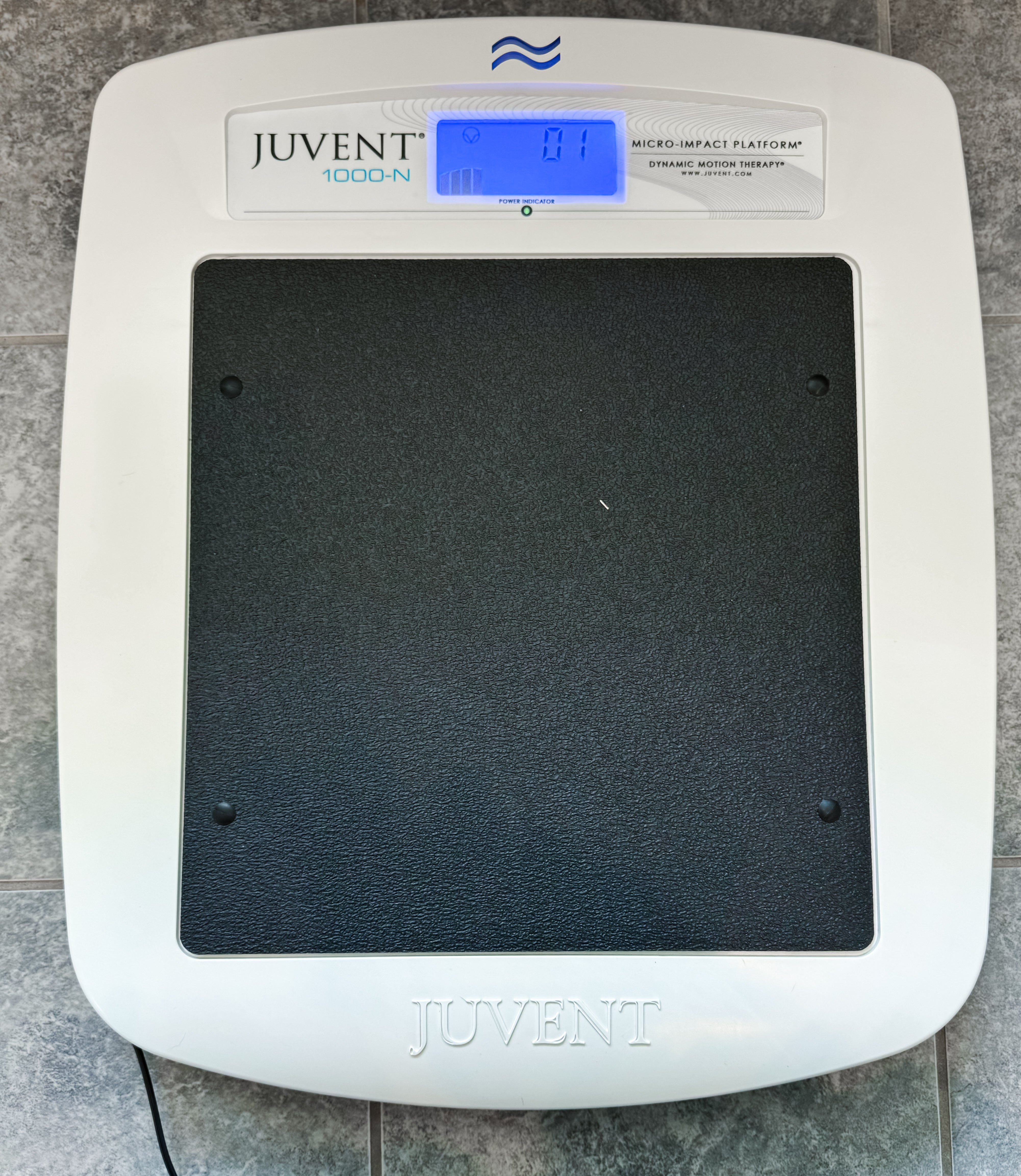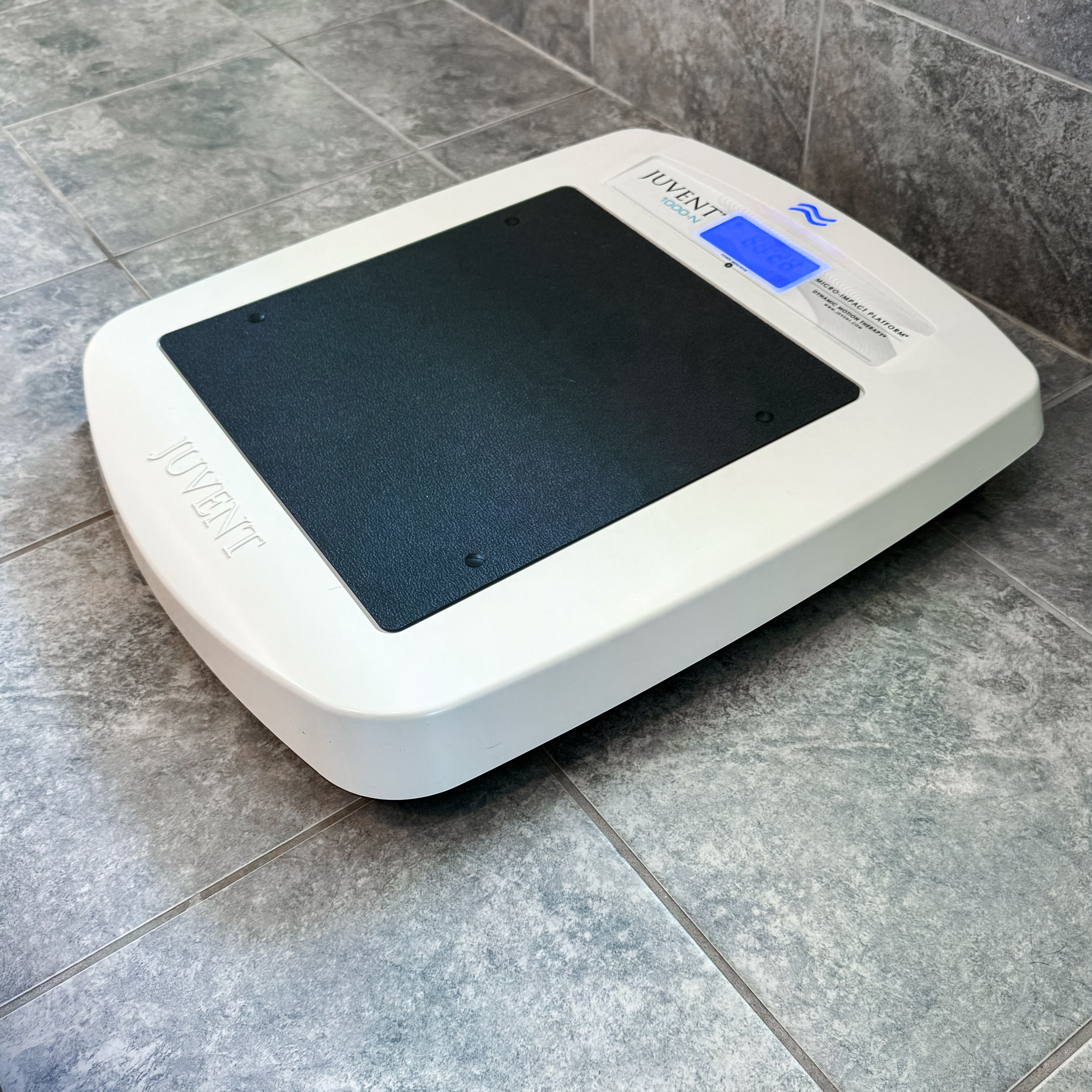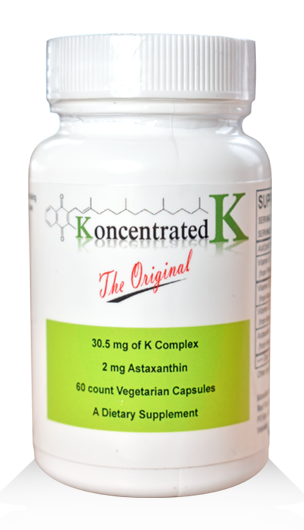
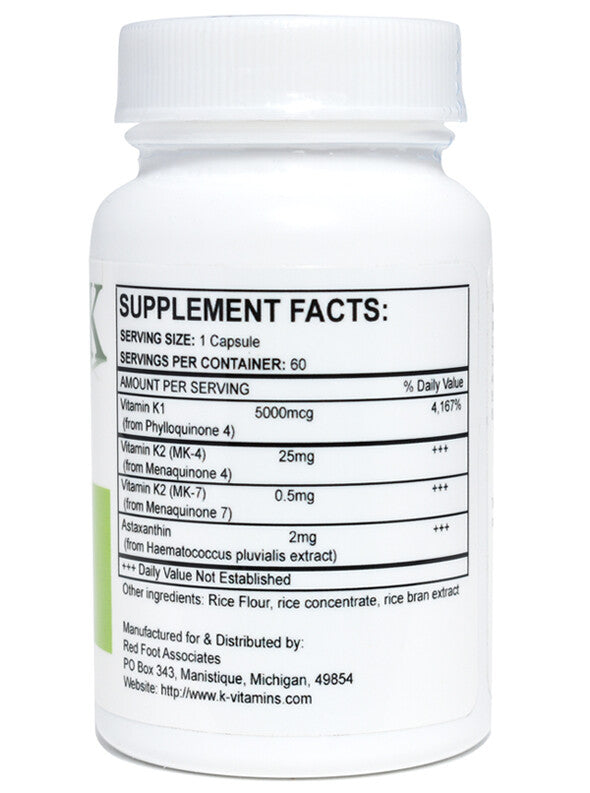
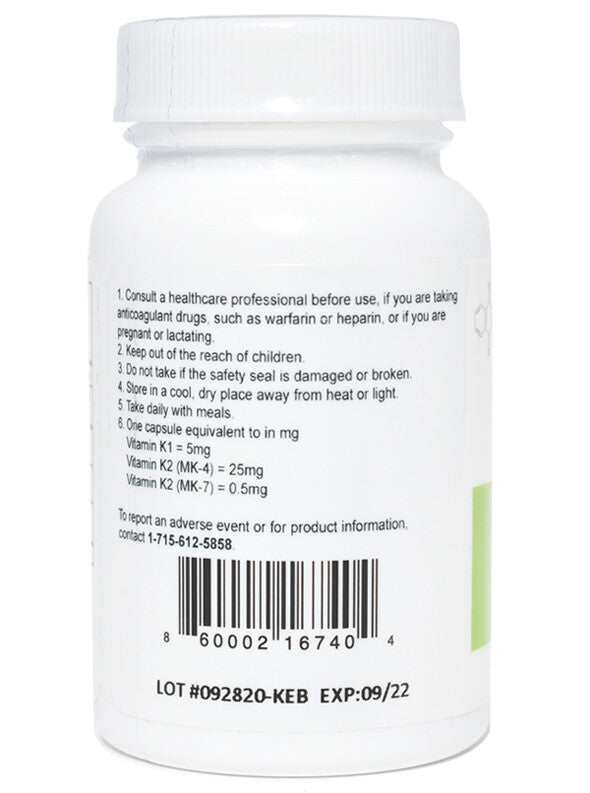
Koncentrated K
Koncentrated K is a multivitamin that offers concentrated doses of various types of vitamin K, including vitamin K1, and types of vitamin K2 — MK4 and MK7. This multivitamin also contains Astaxanthin, a powerful antioxidant.
Each vegetarian capsule contains:
- Astaxanthin (2 mg)
- Vitamin K1 (Phylloquinone 5 mg)
- MK7 (Menaquinone 7, 0.5 mg)
- MK4 (Menaquinone 4, 25 mg)
Koncentrated K, the original, is the only brand that offers this blend of ingredients in a high, therapeutic dose. By supplying a biologically effective dosage of K vitamins, these capsules offer enough K vitamins to maintain your regular bodily requirements as well as extra amounts to help reverse the effects of a vitamin K deficiency.
The vitamin K family plays a vital role in bone metabolism and health. While vitamin K1 helps with blood clot formation, consuming this micronutrient can promote bone health. MK7 and MK4 also benefit various body systems.
Pairs well with

Koncentrated K
If you have any questions, you are always welcome to contact us. We'll get back to you as soon as possible, within 24 hours on weekdays.
Shipping Information
Use this text to answer questions in as much detail as possible for your customers.
Customer Support
Use this text to answer questions in as much detail as possible for your customers.
FAQ’s
Use this text to answer questions in as much detail as possible for your customers.
Contact Us
Use this text to answer questions in as much detail as possible for your customers.
Clinically Researched
Juvent’s patented micro-impact technology delivers gentle vibrations that stimulate bone and muscle health. This low-impact therapy has been proven to enhance circulation, improve balance, and support recovery—all without putting stress on your joints.
Blog posts
How Much Rest Time Should You Take Between Workouts?
When it comes to fitness, most of us focus on pushing harder, lifting heavier, or going longer. The most overlooked component of any training program is rest, which is just as critical as the workout itself. Rest allows your body to rebuild, recharge, and get stronger. Without it, you risk burnout, injury, and stalled progress. So, how much rest between workouts is necessary? The answer depends on your activity type, goals, and personal recovery rate. Here’s how to find the right balance.
Having Trouble Sleeping? Try These Six Things Before Bed
Getting quality sleep isn’t just about feeling rested; it’s essential for mental clarity, emotional well-being, physical recovery, and long-term health. Unfortunately, many people struggle to fall or stay asleep at night. If you find yourself tossing and turning, you’re not alone! We’ve put together several things to help you sleep, so you can reclaim restful nights.
Who Is Prone to Edema and Why?
The buildup of excess fluid in the body’s tissues, which leads to swelling, is a condition known as edema. While it can affect anyone, certain individuals are more prone to developing edema due to specific health conditions, lifestyle factors, or genetic predispositions. Understanding the risk factors of edema and how to manage it can help individuals maintain better overall health and prevent complications.
Understanding the Different Risks for Indoor and Outdoor Sports
Sports keep us active, allow us to socialize, and, for those with a competitive spirit, provide a chance to best others. Engaging in sports is an excellent way to stay active, build strength, and improve overall well-being. However, whether you play indoors or outdoors, each environment presents unique risks. Awareness of these risks can help athletes take preventative measures to stay safe while maximizing performance.
What Are the Most Common Post-Menopause Symptoms?
The human body goes through phases and transitions marked by increases and decreases in the activity of certain hormones. Menopause is one of those stages. Estrogen decreases and eventually leads to a significant milestone in a woman’s life: the end of menstruation. Once menopause has passed and a woman has gone a full year without a period, she is considered post-menopausal.
How Does Exercise Change as We Age?
At every stage of life, exercise is essential for physical and mental well-being. How we move and train should evolve as we age. Factors such as metabolism, muscle mass, flexibility, and how our heart rate responds all shift over time. This influences how we approach physical activity. When you understand how age impacts your body’s response to exercise and its abilities, you can maintain fitness, prevent injury, and support long-term health.
Exercise and Gout: Staying Active Without Aggravating Symptoms
The inflammatory flare-ups that occur for those with gout can cause pain that makes movement uncomfortable—even walking around the house. Regular exercise is a necessary measure for overall health and joint function, but the challenge for those with gout is finding the right balance. Staying active without exacerbating symptoms is possible with the proper knowledge. We’ll answer how exercise can help gout and highlight, which types of exercise are best for those with the condition.
Supplements for Joint Health: What Works and What Doesn’t
When your joints aren’t healthy, your mobility, comfort, and lifestyle are negatively affected. It makes simple tasks like going to the grocery store a major effort and keeps you from enjoying yourself. As people search for ways to support their joints, many turn to supplements. But with so many options available, you may wonder if there are any joint supplements that actually work.
Juvent has introduced its innovative HydroxyBMD3 supplement system at the National Bone Health & Osteoporosis Foundation (BHOF) Symposium. This unique AM/PM formula is specifically designed to address the health challenges associated with menopause and andropause. Backed by clinically validated and patented ingredients, HydroxyBMD3 supports bone, joint, skin, and cardiovascular well-being.
